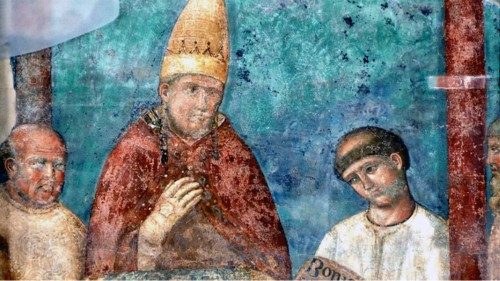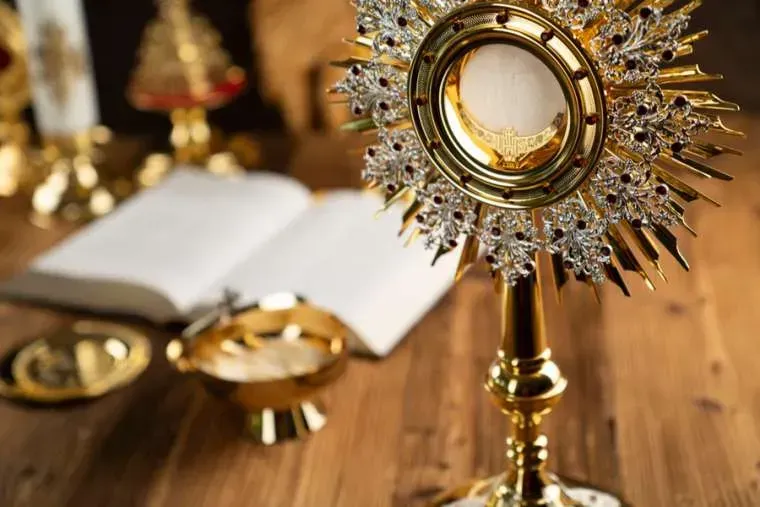Every 25 years, the Catholic Church invites its faithful to a “Jubilee Year”, also known as the Holy Year. A tradition dating back to the year 1300, it is celebrated at regular intervals, although there have also been extraordinary jubilees at other times to mark special occasions.

The Jubilee Year and its characteristics :
1- Plenary indulgence :
One of the most significant features of a Jubilee Year is the opportunity offered to the faithful to obtain a plenary indulgence. This indulgence is a remission before God of the temporal punishment due for sins whose guilt has already been erased by the sacrament of Reconciliation. To obtain this indulgence, the faithful must perform certain devotional practicessuch as visiting specific churches or performing works of mercy, corporal or spiritual.
Jesus’ preaching in Mt 25:35-36 paints a picture of these works of mercy, so that we can understand whether or not we are living like his disciples.
Let’s rediscover works of corporal mercy :
-
- Feed the hungry,
-
- Give drink to the thirsty,
-
- Clothe the naked,
-
- Welcoming foreigners,
-
- Assisting the sick,
-
- Visit the prisoners,
-
- Burying the dead.
And let’s not forget the works of miséricorde spirituelles :
-
- Advising those in doubt,
-
- Teaching the ignorant,
-
- Warn sinners,
-
- Consoling the afflicted,
-
- Forgiving offenses,
-
- Put up patiently with annoying people,
-
- Praying to God for the living and the dead.
”We can’t escape the Lord’s words, and it is on them that we will be judged: will we have given food to the hungry and drink to the thirsty? Have we welcomed the stranger and clothed the naked? Will we have taken the time to stay with the sick and the imprisoned? (Cf. Mt 25:31-45).
In the same way, we will be asked if we have helped to overcome the doubts that engender fear, and often loneliness; if we have been able to overcome the ignorance in which millions of people live, especially children deprived of the necessary help to be freed from poverty; if we have made ourselves close to those who are alone and afflicted; if we have forgiven those who offend us, if we have rejected every form of rancor and hatred that leads to violence, if we have been patient in the image of God who is so patient with us; if, finally, we have entrusted our brothers and sisters to the Lord in prayer. It is in each of these “least ones” that Christ is present. His flesh becomes visible again as a tortured, wounded, scourged, hungry, lost body… to be recognized by us, touched and attended to with care. Let us not forget the words of Saint John of the Cross: “In the evening of our lives, we shall be judged by love”. (Pope Francis, “Misericordiae Vultus”, § 15)
2- Opening the Holy Door :
In Rome, the start of the Jubilee Year is marked by the opening of the Holy Door of St. Peter’s Basilica by the Pope. This door is usually sealed, and is only opened during Jubilee Years. Crossing the Holy Door is symbolic of repentance and the passage to a new, holier life.
3- Call to Conversion and Reconciliation:
The Jubilee is a time when the Church places special emphasis on conversion, reconciliation and penance. It’s a time to reflect on God’s mercy and to seek to draw closer to him.

4- Pilgrimage :
Traditionally, the Jubilee Year is a time when the faithful are encouraged to undertake a pilgrimage, particularly to Rome, for a profound spiritual experience. It‘s a time for prayer, meditation and spiritual renewal.
5- Specific topics :
Each Jubilee Year may have a specific theme, defined by the Pope, which guides the year’s reflections and activities. For example, for the Jubilee Year 2025, the theme is “Pilgrims of Hope”.

The Jubilee Year through time
Over the centuries, the jubilee year has evolved, influencing various aspects of society. Landmark jubilees have left a lasting imprint, becoming key moments of spiritual and social transformation and rebirth. These celebrations have shaped history, marking the evolution of faith and religious practices through the ages.
Today, the Jubilee Year remains a time of deep reflection. It invites contemplation, reconciliation and renewal, offering a welcome break from the hectic pace of modern life.
Ref. / Bible Routes :
